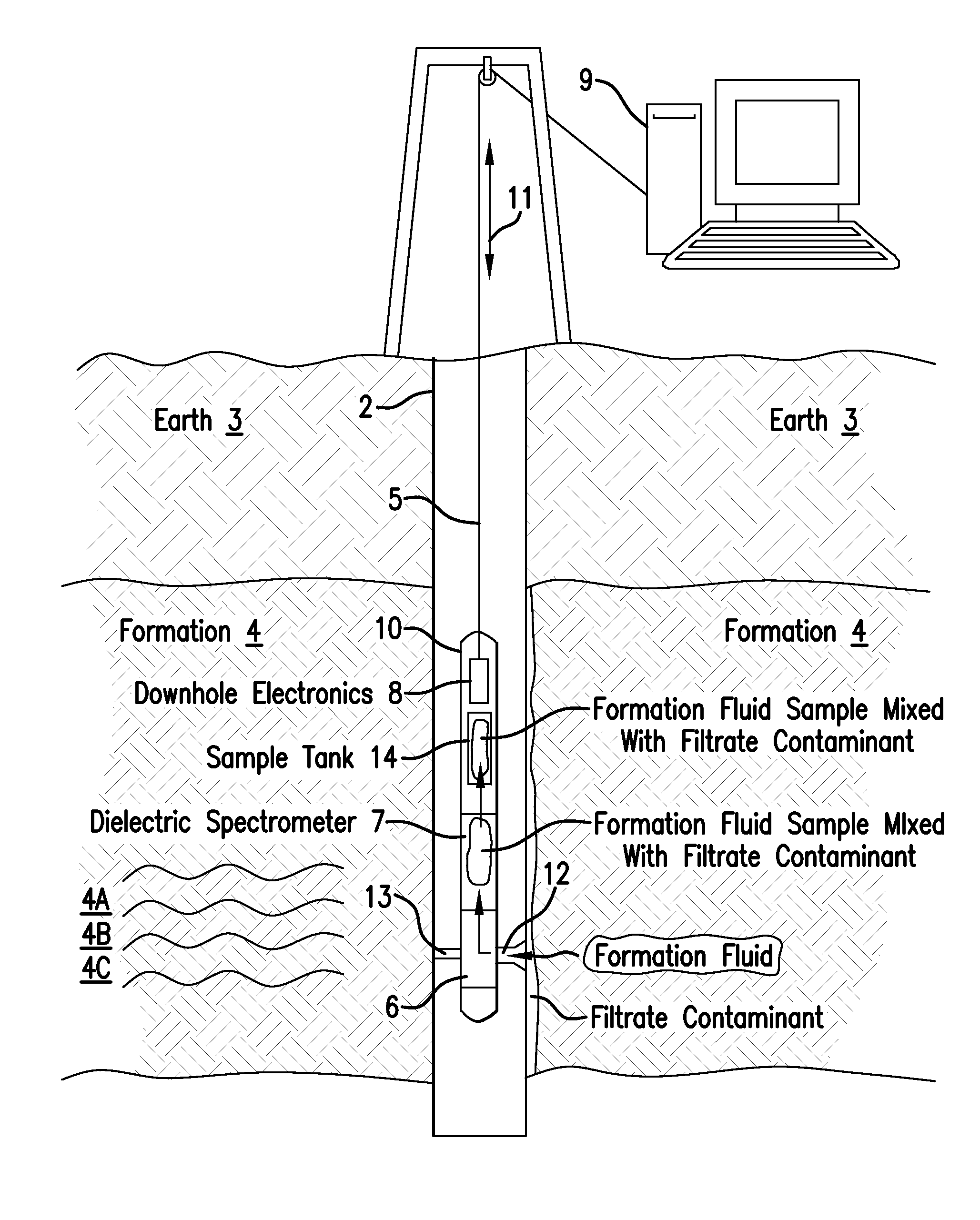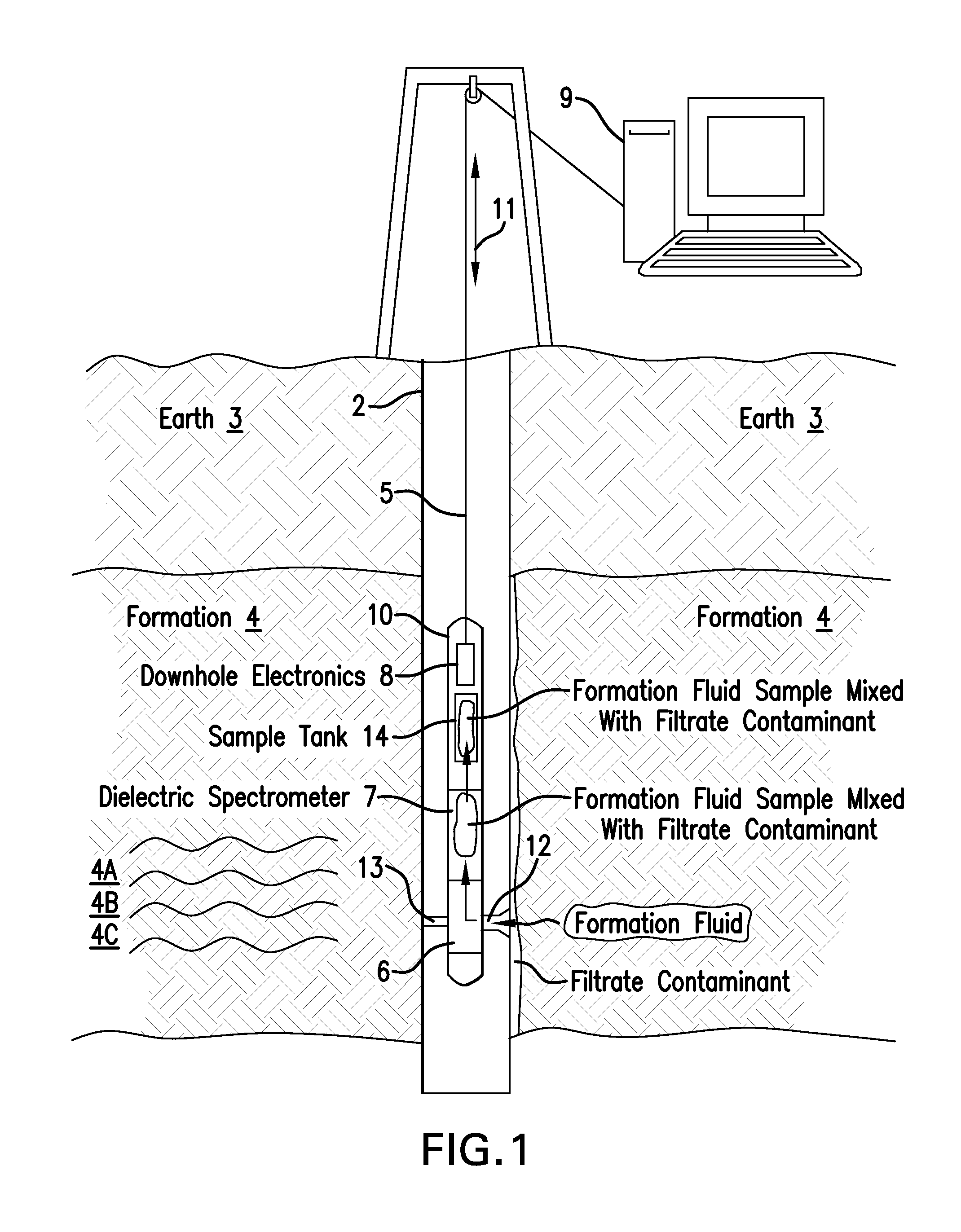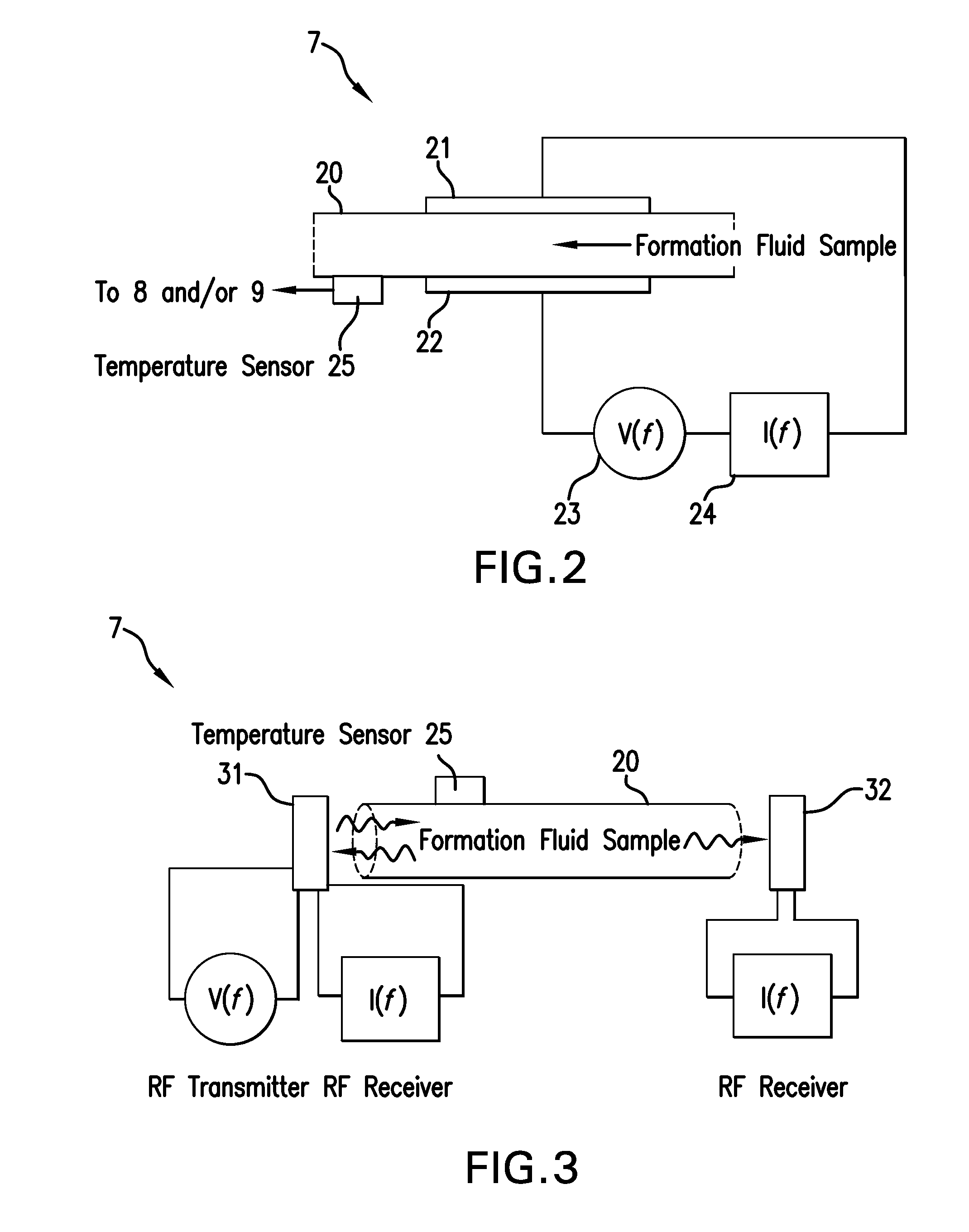Dielectric spectroscopy for filtrate contamination monitoring during formation testing
a technology of dielectric spectroscopy and formation testing, which is applied in the direction of detection using electromagnetic waves, instruments, and borehole/well accessories, etc., can solve the problems of high level, compromising the fluid sample that one is trying, and miscibility of filtrate with the fluid sampl
- Summary
- Abstract
- Description
- Claims
- Application Information
AI Technical Summary
Benefits of technology
Problems solved by technology
Method used
Image
Examples
Embodiment Construction
[0022]Disclosed are exemplary embodiments of apparatus and method for estimating a volume fraction of a formation fluid in a sample having a filtrate contaminant. The apparatus and method call for conveying a fluid extraction tool in a borehole penetrating an earth formation of interest containing a formation fluid. The fluid extraction tool is configured to extract a sample of the formation fluid through the borehole wall. Upon obtaining the sample, which may be a mixture of formation fluid and filtrate contaminate, a dielectric spectrometer measures a permittivity (also referred to as a dielectric constant) of the fluid as a function of frequency. From the measured permittivity as a function of frequency, the volume fraction of the formation fluid and / or the volume fraction of the filtrate contaminant may be determined. Based upon the measured contamination percentage, the operator can decide whether the fluid sample has reached sufficient purity to be collected into a sample tank...
PUM
 Login to View More
Login to View More Abstract
Description
Claims
Application Information
 Login to View More
Login to View More - R&D
- Intellectual Property
- Life Sciences
- Materials
- Tech Scout
- Unparalleled Data Quality
- Higher Quality Content
- 60% Fewer Hallucinations
Browse by: Latest US Patents, China's latest patents, Technical Efficacy Thesaurus, Application Domain, Technology Topic, Popular Technical Reports.
© 2025 PatSnap. All rights reserved.Legal|Privacy policy|Modern Slavery Act Transparency Statement|Sitemap|About US| Contact US: help@patsnap.com



